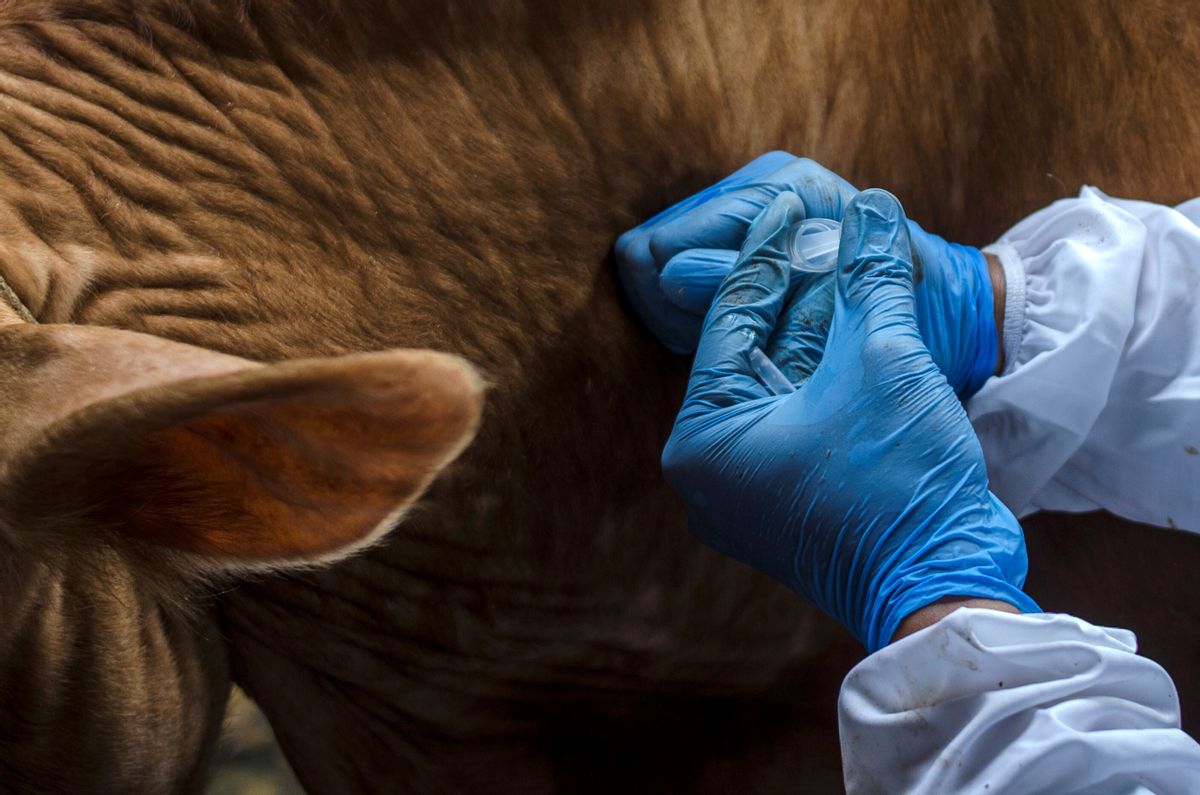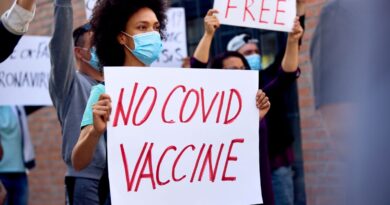Has Vaccine mRNA Entered the Food Supply via GMO Plants or Vaccinated Livestock?

mRNA from COVID-19 vaccines has entered the food supply via genetically modified plants bred to contain it or through the consumption of vaccinated livestock.
For several years, a collection of anti-vaccine activists, snake oil salesmen, anti-GMO activists, and deep state conspiracy grifters have been raising the alarm about the specter of the government secretly adding COVID-19 vaccines into the food supply.
One recent example came in the form of a TikTok video that concluded Americans must “take back control of our democidal government”:
Broadly speaking, the general claims are that vaccines have entered the food chain through plants genetically modified to carry COVID-19 vaccine ingredients, and that vaccines have entered the food chain through meat due to the fact that livestock, they say, are now vaccinated with mRNA vaccines. (mRNA vaccines use laboratory-created messenger RNA — a genetic material that teaches cells how to make a proteins — to trigger an immune response in the body.)
Problems with these assertions about the vaccines are not in short supply. Here Snopes explains why all these claims lack merit.
mRNA in Plants
Claims regarding COVID-19 vaccines “in your salad” have persisted on the internet and recirculated due to misreadings or misinterpretations of several press releases or scientific research.
For example, in the viral TikTok, an ominous-sounding narrator explains that “the genetic editing of plants to contain edible vaccines is well underway. Work is being done with bananas, potatoes, tomatoes, lettuce, rice, wheat, soybeans, and corn.” The narrator cites the company Medicago as an example of a company involved in such work.
Using Medicago as an example of an edible vaccine, as myriad anti-vaccine websites have, is misguided for several reasons — most notably the fact that their product was an injected vaccine and in no way edible. The confusion stems from the fact that this company produced its active ingredient with genetically modified plants, but the final product saw that active ingredient extracted and purified into a more traditional vaccine.
Using Medicago as an example of mRNA technology is equally problematic, as Medicago’s product in no way utilized or contained mRNA. Medicago’s aim was to produce a Virus Like Particle (VLP) vaccine — one that introduces materials that mimic portions of a virus to train the immune system to fight the actual virus.
Using Medicago as an example of something “underway,” as the TikTok video does, is also problematic. The company shut down entirely in February 2023 due, they said, to “significant changes” in the vaccine market.
Another item that frequently plays into fears about the government covertly adding mRNA to the nation’s food supply stems from research conducted at the University of California at Riverside. A September 2021 news release described the significance of a grant recently awarded to Juan Pablo Giraldo, one of the university’s professors:
One of the challenges with [mRNA vaccine] technology is that it must be kept cold to maintain stability during transport and storage. If this new project is successful, plant-based mRNA vaccines — which can be eaten — could overcome this challenge with the ability to be stored at room temperature.
Mike Flynn, during a September 2021 podcast appearance, referenced this research, describing it as “putting the vaccine in salad dressing.”
While salad dressing plays no role, the concept here does involve a theoretically edible vaccine product that contains mRNA. Concept is the operative word, however. The research here is very much in its infancy.
“My lab is developing tools that can deliver genetically encoded information into components of plants that can make a wide variety of molecules in the biopharmaceutical industry, like mRNA vaccines or protein-based drugs or hormones and lipids,” Giraldo said in a January 2022 podcast interview.
While the press release discusses edible plants, Giraldo, in the podcast, discussed the potential mRNA technology as something that would be purified into some standardized form. His comments also showed how preliminary the research was at that time:
There are very easy techniques to extract chloroplasts from plants…. So they are like little micro-capsules similar to the lipid capsules that mRNA vaccines use. For example, the Moderna vaccine uses mRNA encapsulated in a lipid vesicle. Well, chloroplasts are formed by lipid vesicles, so you can envision that the contents of the biopharmaceuticals that we want to produce are already encapsulated there.
The bottom line is that plants that can produce vaccine ingredients are a topic of research, but that research is preliminary. In most cases, the idea is not to create edible food but to use plants to create active ingredients from food.
mRNA in Meat
The TikTok video also suggests that “gene editing is now officially in our meat industry,” arguing that “lobbyists for the cattlemen and pork associations in several states have confirmed that they will be using the mRNA COVID vaccines on their livestock.”
This claim stems, in part, from an April 2023 tweet from “attorney and freedom fighter” Tom Renz regarding a proposed piece of legislation in Missouri:
Renz’ assertion “that lobbyists for the cattlemen and pork associations in several states have CONFIRMED that they will be using the mRNA COVID vaccines on their livestock,” is particularly suspect, given the complete lack of mRNA vaccines licensed for use on livestock in the U.S. An April 2023 statement from the National Cattlemen’s Beef Association (NCBA) directly addressed the assertion in Renz’ tweet:
There are no current mRNA vaccines licensed for use in beef cattle in the United States. Cattle farmers and ranchers do vaccinate cattle to treat and prevent many diseases, but presently none of these vaccines include mRNA technology.
In an email to The Associated Press, U.S. Department of Agriculture spokesperson Marissa Perry said that there are no licensed mRNA vaccines against COVID-19 for any animals. Even if livestock were vaccinated with mRNA vaccines, however, the idea that this would result in human exposure is not tenable.
mRNA is extremely fragile and susceptible to heat. The notion that these precisely engineered sequences normally coated in specialized lipids would survive, unprotected, the slaughter of the vaccinated animal, the combustion of that animal’s carcass, and the ingestion of that animal’s meat inside one’s stomach is simply unrealistic.
Speaking to Agence France-Presse in January 2023, Timothy Mahony, a professorial research fellow at the Queensland Alliance for Agriculture and Food Innovation’s Centre for Animal Science in Australia said that mRNA could not survive such a journey. “There is no scientific basis for the claim that if someone was to consume meat or other tissues from an animal that had been vaccinated with an mRNA vaccine, it would enter their body,” he said, explaining that the digestive tract is “designed to break down the large molecules in our food so we can absorb them.”
The Bottom Line
The idea of using plants to create COVID-19 vaccines, including mRNA ones, is not new. Still, they remain largely theoretical concepts and would likely not, in practice, involve the actual consumption of plant material. Regardless, this technology is in its infancy and is not anywhere close to being “underway.”
The notion that mRNA is in meat, or will soon be in meat, stems from the false notion that mRNA vaccines for livestock are presently in use. They do not yet exist, and as such claims that their use is imminent are impossible. Even if such a vaccine were used, however, claims that such a use could transfer active vaccine ingredients to a consumer of that animal’s meat are rooted in scientific impossibilities.
For those reasons, we rate this collection of claims as “False.”


